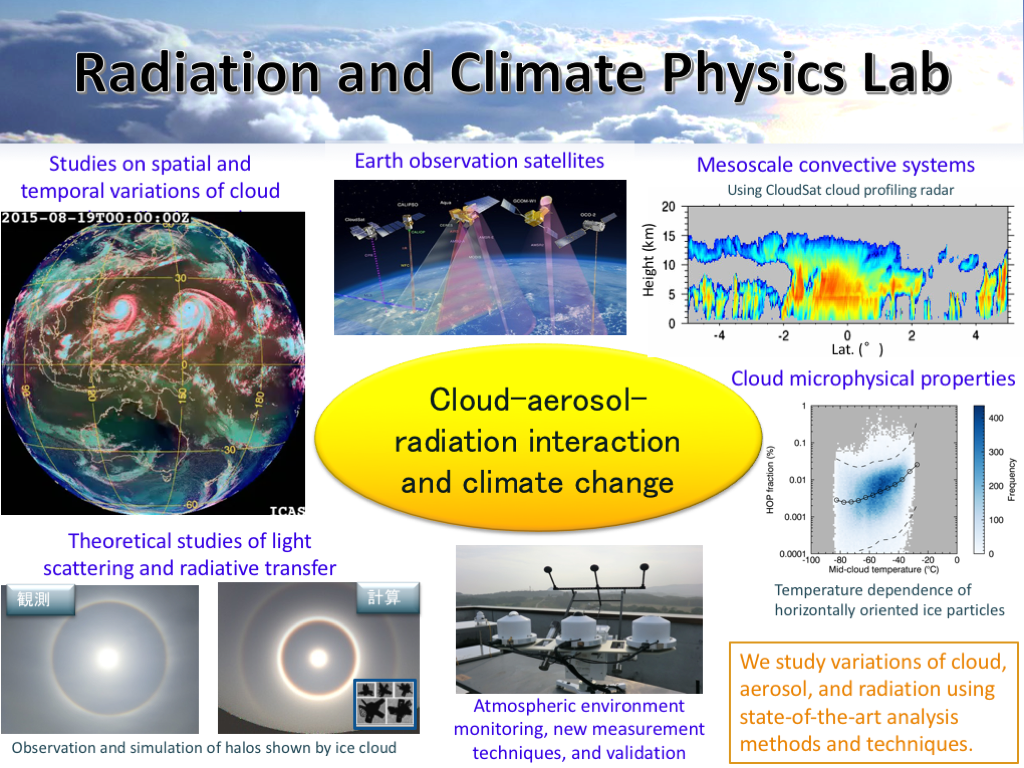Aims
To better understand the roles of cloud and aerosol in climate by theoretical and observational studies
Research overview
Distribution and properties of cloud and aerosol determine the heating and cooling of the atmosphere and surface and the earth’s radiation budget. Changes in the characteristics of cloud and aerosol may impact the climate system through the radiation budget and hydrological cycle. However, the distribution and properties of cloud and aerosol are not known well enough, and uncertainties remain in the climate change predictions. To improve the accuracy of climate/weather prediction, a detailed representation of the cloud-aerosol-radiation process is needed, for which we need to understand better each phenomenon and process.
In the laboratory, we are actively conducting theoretical and observational studies to better understand the roles of cloud and aerosol in the climate system. For observation of cloud and aerosol, we use satellite/ground/ship-based visible, infrared and microwave radiometers, pyranometer, spectral radiometer, cloud radar, and lidar. Satellite observations are useful for wide area measurements, and we use ground/aircraft/ship-based observations for validation of satellite retrieval and development of new remote sensing techniques. To promote these advanced researches, we are promoting basic researches such as development of three-dimensional radiative transfer models. By integrating the findings obtained from observation amd data analysis with theory, we are aiming at improving the climate prediction models.
Keywords
climate change, aerosol, cloud, microphysics, optical properties, satellite observation, ground-based observation, remote sensing, radiative transfer, model development, simulation, deep learning

